
With much laying-on of fanfares and gift boxes our friends at Decca Classics have unleashed Luciano Pavarotti Edition 1: The First Decade on a weary and satiated public. This is the inaugural offering
of a planned troika of box sets commemorating the business dealings of the Modenese tenor to that British label. There was no holier alliance in all of classical recording (save Karajan and whatever label he deemed worthy) since, unlike the vast majority of classical artists, Luciano Pavarotti sold enough records to not only underwrite the projects he participated in but to keep Decca flush from the ensuing tsunami of coin his fans generated. Which is why, dear friends, they’re celebrating, not his birth or memorial but… the date of his contract signing.
Venal, you say?
In packaging the size of an old LP box set (ah, the memories) we get twenty-seven cd’s, a commemorative book with photographs you haven’t seen in decades, and even a bonus reissue of the very first Pavarotti vinyl EP from 1964. The works included are as follows; Beatrice di Tenda, La fille du regiment, L’eisir d’amore, Macbeth, Rigoletto, Lucia di Lammermoor, Turandot, La Bohéme, I Puritani, Madama Butterfly, La Favorita, the Verdi Requiem, his “Verdi & Donizetti Arias” recording from 1968, “Pavarotti in Concert” from Bologna with Richard Bonynge conducting from 1971 and a bonus disc of excerpts and minutiae from various sources including a few newly-discovered tracks from his professional debut in 1961 as Rodolfo in Reggio Emilia. Of particular interest because you here Pavarotti’s first public “Che gelida manina” and on the high C at you audibly hear the entire audience turn to each other and say (in effect) “did ya hear that?” It’s a moment.
Naturally, the first question we ask ourselves is why? I’m sure it’s safe to say that for a large number of us these recordings were our introduction to these works. Even in the metropolis I was raised in it’s not like anyone was performing these operas often (or, since I’m from Los Angeles, at all). Also, thanks to Mr. Bonynge scurrying about in the depths of the Covent Garden archives like an operatic Howard Carter, many of these works were given their first informed musicological editions here.
Sad to say most of these transfers haven’t been revisited since their initial digital conversions some 30 years ago and that technology has improved considerably as is immediately evident. The spaciousness on the soundscapes has been widened out like the curtains parting at the Cinerama Dome and the bass line warmed up like fresh baked cookies on Christmas morning. Singing of this caliber truly deserves the best possible conveyance and what singing there is my friends. As a bonus the Lucia, Butterfly, and Favorita have been accommodated down to two discs and the Requiem down to a single cd while gaining an even more opulent accoustic than the original London ffrr (oh, more memories).
First, to the voice. It was, in his prime, probably the most dulcet tenor before the public, very clear with an ease and fluency of enunciation and perfect intonation. He favored a tight “squillante” quality in the passaggio that gave his predominantly lyric sound a spinto edge at the top. Very early on he also mastered the art of the tiny diaphramatic push at the end of a phrase or held note that adds excitement. His trembling mezza voce had a sensuality that even now can take you by surprise. The seeming effortlessness of his glorious top that I’m certain had nearly all his tenor colleagues gnashing their teeth in envy. The other side of that shiny coin is that he could barely read music or count, a fact that is highlighted at some very prominent bel canto turns here.
His soprano partner on most of these outings is Dame Joan Sutherland, veritable iron lung of technical control. Pavarotti claims he learned how to support his voice from working with her on their early tour of Australia and she deserves that acknowledgment. She’s commands the most fearsome array of weapons in her bel canto arsenal; stacati, roulades, and a variety of trill where most sopranos can fake only one. Even with modern stereo, however, the microphone wasn’t always Dame Joan’s best friend when she was up in the stratosphere.
Glaring examples this could be found in the Elisir finale and most especially the Puritani polonaise both of which have been cleaned up so you can enjoy the E-flat set for stun instead of the baffle of overload. Still her Adina, Marie, Elvira, and Lucia are not the sprightly but delicate songbirds perhaps intended. She’s a coloratura battleship with the flag of the Commonwealth unfurled in glory. Gentle at times, mayhap, but always in excelsis.
The other soprano who he prominently shared his career with is Mirella Freni and she is represented by two of her greatest portrayals. Her Mimi in Boheme, which is lovely but one long ebb, and her Butterfly. Freni is the near perfect balance of lace-like delicacy that blossoms into a full throated and beautiful expressions of happiness and grief in equal measure.
In spite of the titanic glacier of mathematical scrutiny that is Karajan’s interpretation she shows a spine of tempered steel especially in, what for me is the climax of the role, “Che tu madre.” She and Pavarotti set down what could be the ultimate version of the Act I love duet if only Karajan weren’t goading the double basses of the Vienna Philharmonic to saw their instruments in half. The engineering here is another great step forward as I’ve always avoided this recording on CD because of it’s slightly veiled quality which was unlike the normal, bright, Decca sound.
The Favorita is, to be sure, a bit of a mess as far as the edition goes, firstly because it’s in Italian, and musical structures and the Act II finale especially sound a tad truncated here and there. The revelation is Nicolai Ghiaurov who turns in one of the most romantic, gentlest performances that I’ve ever heard from this basso. He ever wanders up into head voice a few times to ravishing effect.
The indefatigable Fiorenza Cossotto also slathers her portrayal with a juicy helping of graceful bel canto romanza and it’s a pleasure not to hear her in Judgement mode. Bonynge at the helm of the Orchestra of the Teatro Comunale di Bologna conducts everything like it’s Bellini and it’s certainly not great Donizetti but, then again, what is?
This is one of those roles where you find Bonynge following or catching up with our tenor because he can’t count or subdivide within the bel canto measures when in cavatina mode. In faster paced music, and certainly Puccini, he’s got either a more definite beat to follow or all that rubato to play with and a good conductor can make it work to his advantage. You see, Maestro Pavarotti, is always musical just not always correct.
The Rigoletto, famous and beloved as it is, has always seemed to me more like a machine than a performance. Recorded back to back with the Lucia in June and July of 1971, it’s like this cast is going through the motions more than trying to give us a valid interpretation. Maybe it’s Sherrill Milnes‘ blunt force trauma of a verismo jester. Or is it the fact that Sutherland, at 45, really couldn’t find the juvenile beauty she exhibited in her first recorded Gilda?
Pavarotti barely registers, he’s just another tenor, and Bonynge just can’t find Verdi’s propulsiveness. It’s like riding in your grandfather’s Cadillac: plush and well appointed but even at top speeds you’re still in an absolute state of luxury and no danger. Also the placement of the voices in the famous Act III quartet makes no aural sense.
The Puritani and Lucia are more of the same although in the Puritani our Baritone is upgraded to Piero Cappuccilli who, in spite of a mellifluous bel canto line and security in small turns and graces, is surprisingly tentative in fioratura and cadenza. Everyone does bring their A-game to this affair and we get the fullest edition of the score ever. Yet, in spite of some very flashy singing, we’re still riding in Grampa’s Cadillac. In the appendices is a very nice studio recording of “A te o cara” backed up by the very young and glorious Arleen Auger. Very much worth the listen.
The Turandot is a completely different affair and it’s a recording that I don’t think has been bettered since it’s release in 1972. It also completely benefits from the sonic upgrade that was very well needed. Zubin Mehta has always made a specialty of this Puccini work and it’s grandiosities match his flashy style and adeptness at marshalling large forces. The whole cast is superbly matched starting with Peter Pears as the old Emperor and a stunning trio of Masks. Montserrat Caballe’s Liu could have literally been written for her special gifts, both dramatically and vocally, and it’s one of her best studio contributions.
The end of “Signore ascolta” gives her a valid reason (instead of an excuse) to show off those dazzling high ppp’s. Pavarotti, safe in the comfort of Kingsway Hall, allows his voice to ring out passionately in a role that was never central to his repertoire and I believe he only performed live in 1977 in San Francisco and then at the Met twenty years later with Jane Eaglen under James Levine. Of course there’s the Operatic National Anthem in Act III and he wrings every bit of juice from it as possible and he’s irresistible.
But Dame Joan is the one here who benefits the most from new support in the pit. Although plenty of eyebrows went askance when it was announced she was going to record Puccini’s Principessa I think it is the greatest thing she ever did. Her diction is sharp throughout, no small feat that, and she easily finds the frigid imperiousness of Act II. Her technical security here is absolutely staggering.
Where most sopranos are skeet shooting for high notes with point, aim, and fire. ‘”In questa reggia” finds our Joan literally glissando-ing about amongst the ledger lines of the score to thrilling effect. After the first riddle she spits out the most gorgeously acrid”Si, la speranza che delude sempre” I’ve ever heard. In Act III once the sleet’s fallen off vocally she makes a believable transition into a woman in “Del primo pianto.” It’s all there and we normally only get most, not all. I should also mention that this was the primary recording that was the gateway drug to my opera addiction. Hide it from your children. It’s opera porn.
Of course, 27 cd’s is a lot of listening and it could have been longer (!) What isn’t included (save for the two big tenor arias as appendix) is the 1970 “Live from the Hindenburg” Un ballo in maschera with Bartoletti conducting. La Tebaldi and her fans may sleep on undisturbed.
What is included is the dubious Macbeth with Dietrich Fischer-Dieskau and Elena Souliotis under Lamberto Gardelli. The edition still suffers cuts though not like its Decca predecessor and it’s ghoulish for the wrong reasons. Fischer-Dieskau just needs a little more voice for this role but he overcompensates with an extra dollop of kunst which doesn’t necessarily help. Souliotis is so wild eyed and ravenous she makes Leonie Rysanek on RCA sound like she’s singing the Countess in Figaro. I’ve never heard any soprano slam into her chest voice above E-natural, or at least any soprano who lasted. By comparison Pavarotti is a model of restraint and self-discipline. Perhaps the first time those exact words have been used to form a complete sentence.
So, all of these CDs come for just under $120. which is about $4.50 apiece and, frankly, I call this a bargain since I honestly didn’t have a lot of these. The next installment will start with the Maria Stuarda and Luisa Miller but I think my interest most likely ends here. I can only imagine the horreurs of the third chapter with all those “Pavarotti and Friends” concerts and the “Three Tenors Part 6: St. Peter’s Square.” Also, I know Decca has been sitting on the live Eaglen/Pavarotti Turandot from the Met since 1997 and I’m betting they’ll use it as “never before released” bait.
I’d also like to mention that some of the publicity photos that adorn the booklet and cd folders are almost heartbreaking in their youth and sincerity. He started out so handsome, young and fit, and unspoiled. But then, didn’t we all? These particular recordings do represent the pinnacle, of a sort, of their art and era and it’s well worth the indulgence and reminiscence. After all, Sutherland and Pavarotti as a team are right up there with Astaire and Rogers and Tracy and Hepburn. Ah, remembranza!














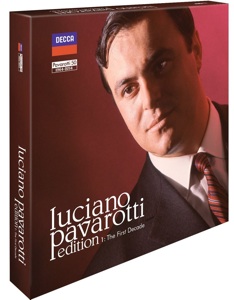
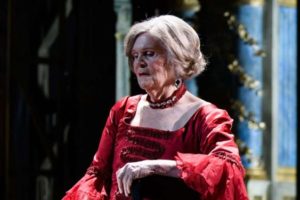
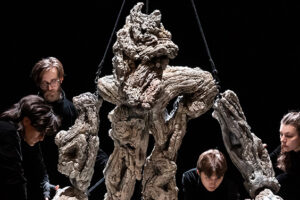
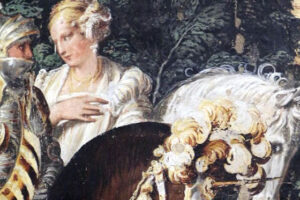
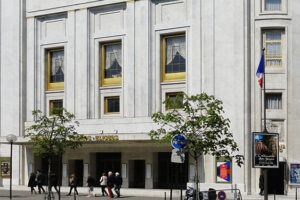






Comments